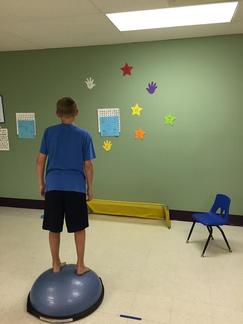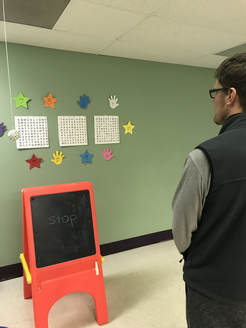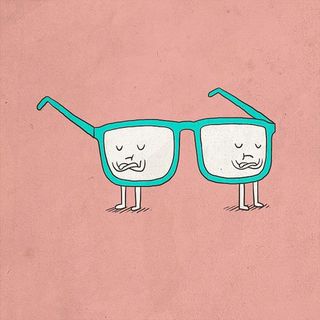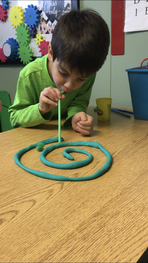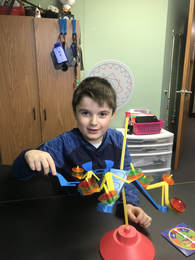Kids in Motion Presentation - 5/14/18
What is Vision Therapy? |
"Vision therapy is similar to physical therapy. In physical therapy, you relearn or enhance the use of various muscles and body parts that are not functioning correctly and/or causing a great deal of discomfort so that you can use those parts more efficiently. In occupational therapy, which strives to restore, reinforce and enhance performance, they are also based on the principle of brain plasticity, where you are able to enhance brain and body function through exercises...Vision is a sensory-motor set of systems, so many times if a patient has difficulty with sensory integration, it is co-managed with occupational therapists."
Indeed, there are similarities between vision therapy and occupational therapy, physical therapy and speech therapy. A vision therapist may work on fine motor skills, including handwriting. A vision therapist typically spends time working on integrating retained infantile reflexes or incorporating balance and gross motor into sessions. Additionally, a vision therapist will work on developing visualization and receptive and expressive language skills. Just like OTs, PTs, and SLPs receive extensive training and education, behavioral optometrists and vision therapists are trained in recognizing and treating a variety of binocular vision disorders. They are trained in the use of specialized vision therapy equipment and lenses, prisms, and filters, along with a myriad of vision therapy exercises. Like OT, PT and ST, vision therapy is active, purposeful treatment completely customized for each patient. It is designed to be life changing and not compensatory. Vision therapy is a precise process utilizing cutting edge techniques and activities based on the latest neuroscience. *http://www.visionandlearning.org/whatisvt08.html |
More about VT
What is VT?
http://www.covd.org/?page=vision_therapy |
What does VT use?
|
|
Vision SkillsWhat does vision therapy address?
|
SACCADES: Saccadic eye movements are rapid jumps of the eyes as they change points of fixation. Examples include small movements made while reading and large movements made while gazing around a room. Most commonly, deficiencies in saccadic eye movement ability can cause difficulty with reading. Accurate saccadic eye movements are necessary for following a line of text left to right and moving from one line to the next.
PURSUITS: Tracking/Pursuit eye movement is the ability of the eyes to smoothly follow moving targets and to scan through visual stimulus. Tracking movements are especially important for reading, driving and playing sports. Additionally, accurate tracking movements play a role in making spatial judgments and moving accurately through space. Tracking is also known as pursuit movements. CONVERGENCE/DIVERGENCE: Convergence is the ability to turn the eyes inward, together as a team. Divergence is relaxing the eyes outward. These skills are vital for developing binocular vision. Convergence Insufficiency is an eye-teaming problem in which the eyes drift outward when reading or doing near work. Symptoms include eye strain, blurred or double vision, loss of concentration and other visual difficulties. This is the most common diagnosis that we see at Focus Academy. ACCOMMODATION/FOCUSING: Accommodation is closely tied to convergence and divergence skills and impacts the ability to look from far to near and near to far with clarity. |
|
Looking for assessment tools to see if your patient needs to be referred for a binocular vision evaluation? Check the document to the right.
|
| ||||||
|
Interested in common symptoms and how they can be vision related? Check out the document on the right.
Vision therapy at Focus Academy addresses dozens of different skills - for a complete outline, please click on the link to the right.
|
| ||||||||||||
How is Focus Eyecare Vision Therapy different?
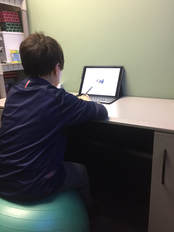
We are the only local VT office that offers visual learning instruction. This means we not only help our patients correct their binocular vision disorders, but we also address life skills and academics.
We use a specialized program of visual thinking instruction and Choice Theory to help our patients learn how to predict the outcome of their actions and make good choices. Additionally, our patients have spent years with unreliable vision skills and developed compensatory, inefficient learning strategies. Difficulties with math, reading, writing and more are common concerns of patients and their parents. Our program has an academic finish to address any learning concerns and help our patients develop strong, effective learning strategies.
Mastery of visual learning improves not only academic performance, but how one functions in everyday life.
We use a specialized program of visual thinking instruction and Choice Theory to help our patients learn how to predict the outcome of their actions and make good choices. Additionally, our patients have spent years with unreliable vision skills and developed compensatory, inefficient learning strategies. Difficulties with math, reading, writing and more are common concerns of patients and their parents. Our program has an academic finish to address any learning concerns and help our patients develop strong, effective learning strategies.
Mastery of visual learning improves not only academic performance, but how one functions in everyday life.
Referral Information
The following checklists are designed to simplify the referral process.
| Basic COVD Referral Checklist | |
| File Size: | 210 kb |
| File Type: | |
| Detailed Referral Checklist | |
| File Size: | 268 kb |
| File Type: | |
Free Basic Vision Evaluations Available for KIM Patients
We offer free basic vision evaluations at the KIM Commerce location. This evaluation can be used to determine if a referral for a binocular vision evaluation is recommended. We are always happy to help and share ideas to support KIM therapists. Contact Melissa at [email protected] or 248-385-8235 for more information.
Resources & Activity Ideas
|
Ipad Apps/Accessories -
|
Games -
|
Web Resources -
VT Activities http://eyecanlearn.com/ http://drboulet.com/tag/activity/ Focus Academy Pinterest Page https://www.pinterest.com/focusacademy/pins/ Focus Academy Facebook Page https://www.facebook.com/focusacademyvision/ |
